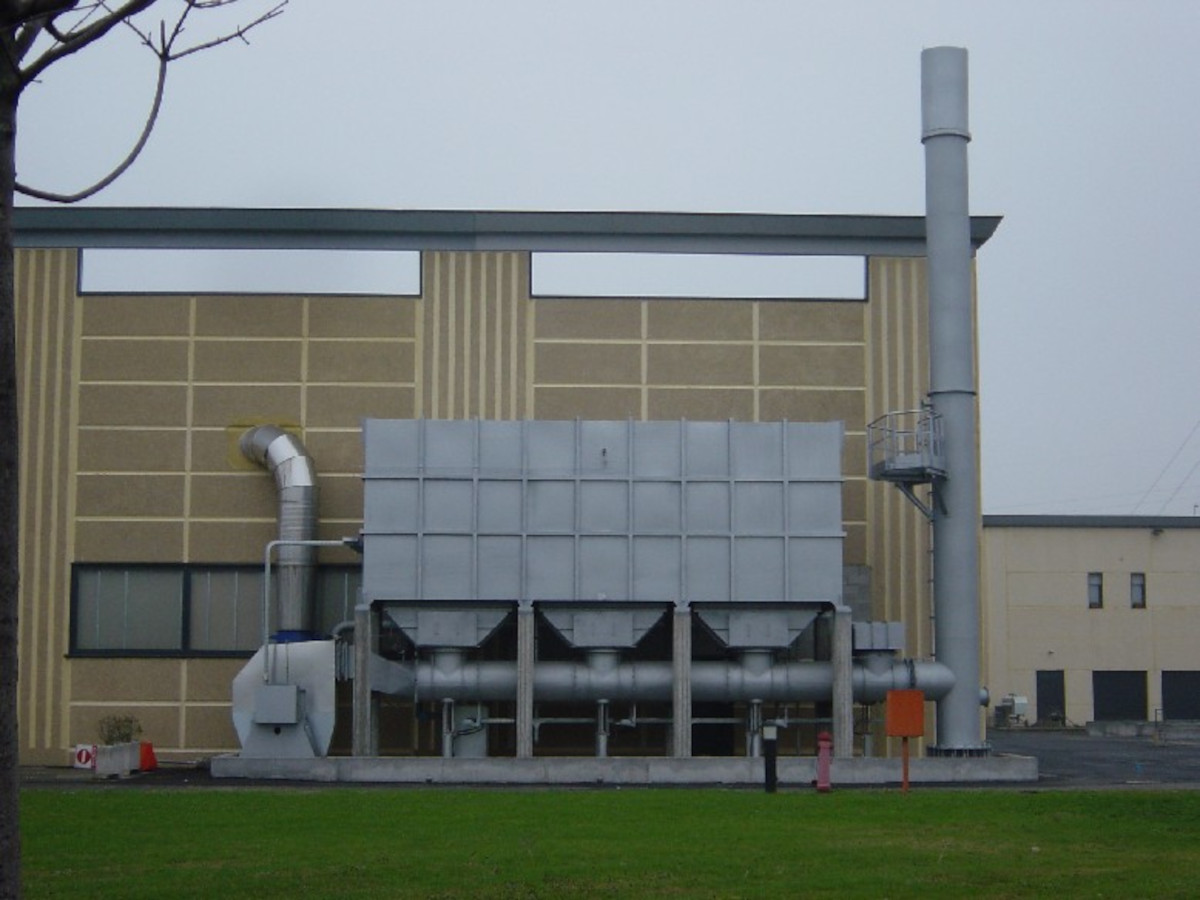The olfactory load of a gaseous stream is normally made of hundreds, if not thousands, of organic compounds of various kinds. These compounds are often present in very low quantity, so that their concentration can sometimes be just a few tens of milligrams/m³ of air. The problem is that some of these pollutants can sometimes have a reduced “olfactory threshold” along with an annoying and/or unpleasant smell. For “reduced olfactory threshold” we mean that some substances can be perceived even at low physical concentrations, i.e. when their presence is highly reduced. This kind of pollutants can often cause olfactory issues.
Deodorisation plants: characteristics and advantages
- High abatement efficiency
- Continuous monitoring of process parameters needed to obtain the requested performances
- Modulating oxidation system to keep the correct operating temperature with different operating conditions, greatly limiting the creation of combustion sub-products
- Lack of components that are prone to poisoning, depletion or that could need programmed replacement
- Possibility of heat recovery
- Easy handling and use, reduced maintenance
- Completely automatic operation with remote assistance
The operating principle of oxidizers for desodorisation
The operating principle of the deodorizing oxidizer is the same as the one described for direct thermal oxidizers, recuperative or regenerative.
The direct oxidizer is preferable for the treatment of small air quantities with high pollutant concentrations and with other substances that would complicate the plant handling, as for example with organic and inorganic dusts which could cause clogging.
The recuperative thermal oxidizer is suggested for bigger flowrates with dusts or problematic compounds, and when a further heat recovery able to heat process fluids (hot water, thermal oil, vapor) can be added downstream the plant.
The regenerative thermal oxidizer, on the other hand, is the ideal solution in case of high flowrates with dusts and oily compounds which could cause the clogging of the ceramic material but are present in such small quantities to avoid this risk.
Oxidizer for deodorisation: plant engineering solutions
In all the above-mentioned cases, the oxidizers dedicated to industrial odours abatement must have the following characteristics:
- Big combustion chamber volumes, to increase the pollutants residence time
- High turbulence, to maximize abatement efficiency
- A specific design to withstand temperatures in the oxidation chamber that are higher than the standard
- Process valves with enhanced sealing, to avoid both pollutant leakages and residual odours
- Fans with shaft sealing
- Easy maintenance and inspection of the plant’s innermost parts, with assisted safe accesses
- Energetic consumptions efficiency, with thermal recovery or combustion optimization devices
All these details offer the most complete and suitable solution when you have high olfactory loads and you want to definitively solve the problem.
Typical applications and sectors
These solutions are typically applied in the following sectors:
- Waste treatment
- Coating and painting
- Bricks, ceramic and building materials
- Petrochemical, oil & gas
Please note that each case needs a specific evaluation of the pollutants to be abated, in order to classify their origin and consequently choose the right abatement technology.
Services provided
- Turnkey supply
- Specific choice of materials based on the application (high inlet temperature, corrosive gases)
- Quenchers and scrubbers for halogenated pollutants
- Secondary heat recovery thanks to our energy recovery solutions
- NOx low emission burners
- Customised design in case of space restrictions.
Choosing Brofind means:
- Customer assistance 24/7
- Impartiality in recommending pollution control technologies since Brofind is owner of many of them
- Experience in the design and manufacturing of abatement plants since 1993
See the page dedicated to Brofind services to understand how we support our customers during the entire lifecycle of the product.
